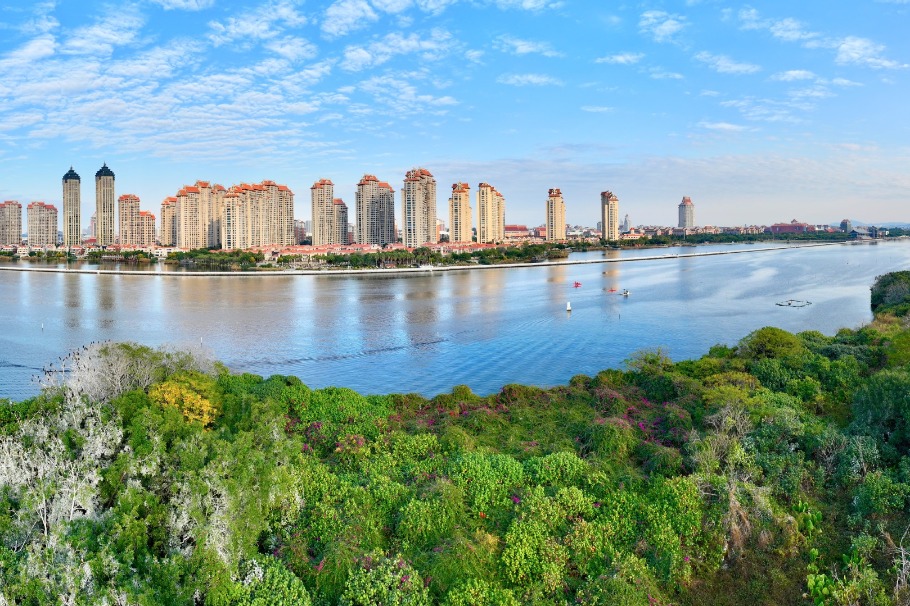'K-shaped' recovery would call for moves to tackle economic polarization


Concerns are rising that the world economy is heading for a "K-shaped" recovery. Some sectors may rebound while others might get mired in a decline, say experts.
China's economy has arguably delivered a broad-based recovery across sectors from the COVID-19-caused dip.
China's battle against the novel coronavirus has achieved a decisive victory and sent its economy recovering briskly, becoming the only major economy that saw positive economic growth last year.
Since the beginning of this year, China's recovery continued to be steady with even further improvements, recording 18.3 percent GDP growth on a yearly basis in the first quarter of the year. Investment, consumption and exports, the three drivers of aggregate demand, all delivered a rally.
Many indicators have substantially exceeded the levels seen in the same period of 2019, prior to the COVID-19 outbreak, such as the growth in industrial output, the total amount of retail sales, and the growth in foreign trade. Growth momentum has gathered speed even when the favorable base effect is stripped out.
Particularly, consumption and services, as the laggards in recovery, have sped up to recover. Retail sales grew 34.2 percent year-on-year in March, up from 33.8 percent in the January-February period.
Meanwhile, the subindex for business activities in the services sector, a monthly indicator of health of the services sector, reached a level of expansion at 54.4 in April, according to the National Bureau of Statistics.
The recovery of China's economy, however, has remained uneven in some respects. The recovery in supply has continued to outperform demand. The growth in fixed-asset investment in properties has been outpacing manufacturing and infrastructure sectors.
The operating condition of large corporations is far better than mid, small and micro-sized enterprises. The digital economy is expanding strongly while the recovery in offline sectors is weaker.
Along the industrial chain, upstream sectors are performing better than the downstream, leaving the proportion of the manufacturing sector in GDP on a decline. Share of the manufacturing sector in GDP has fallen to 26 percent last year, compared with 27 percent in 2019, a trend that could drag down China's potential growth rate.
The job market has also seen imbalances. While Guangdong, Zhejiang and some economically developed provinces have seen a shortage in labor or a difficulty in hiring an adequate number of new employees, many job seekers are struggling to land a job across cities located in the central and western regions of the country. Flexible employment is on the boom while manufacturers have found it harder to hire qualified employees.
When measured by both aggregate economic output and per capita output, the gaps in economic development between the eastern and western regions as well as between southern and northern regions have expanded as well.
The uneven recovery pattern is the result of both country-specific factors, such as the Sino-US economic frictions and long-lasting institutional problems, and common reasons across the world amid the COVID-19 pandemic. Globally, economic polarization has intensified since last year.
Traditional economic theories believe that conditions of different economic sectors are widely correlated. Or, different sectors all contract amid economic recession and restore vitality together when recovery happens.
But this time, it is different. A "K-shaped "recovery could transpire globally.
On the regional front, the economic gap between the two major economies of the United States and Europe is widening. In 2020, the US GDP fell by 3.5 percent, shallower than the 6.8 percent contraction of the eurozone. The gulf may grow this year as the US economy is projected by the Organisation for Economic Cooperation and Development to rebound by 6.5 percent this year, compared with 3.9 percent of the eurozone.
While growth in developed economies is gaining momentum, some low-income economies are still in difficulty, such as those in Africa and Latin America.
Meanwhile, the pandemic has pulled some industries upward, but made others down and out. Large corporations obtained financing more readily than small ones, and industries like technology and finance are rebounding while tourism, entertainment and catering are lagging.
The wealth gap has also enlarged. Since last year, monetary stimulus has pushed up asset prices globally, which greatly boosted the wealth of the rich. The low-income groups, however, have suffered as the job market was hit by COVID-19.
There has also been a polarization between the real economy and the virtual economy, or the financial market: Whereas economies are still in the process of recovery or even still in contraction, the stock markets have been surging.
A so-called K-shaped recovery would be a world dominated by the strong. This would result from a combination of different results of combating COVID-19 among economies, the macro stimulus that boosted asset prices and benefited large corporations, as well as long-term trends like the rise of the digital economy and population aging.
Now, China and the rest of the world face the common task of dealing with the economic differentiation or polarization. Though different countries should take tailor-made measures toward the specific problems they face, I think a universal key point will be properly handling the relationship between the market and the government.
In China, we should continue to respect the law of economic development and better combine an effective market with a capable government. The gist will be distinguishing what factors are decided by the market mechanism, toward which the government should not intervene, and what are market failures that require the government to play its role.
The ultimate solutions to the unbalanced economic development in China also lie in comprehensively implementing the new development philosophy, building the new development pattern, and taking supply-side structural reform as the general goal while upholding the strategic basis of expanding domestic demand.
As for the Sino-US dispute over the regulation of US-listed Chinese firms, the current situation has signaled that many Chinese firms may seek listings back in home markets, both Hong Kong and the mainland bourses, though there are yet to be a large number of delistings by US-listed Chinese companies thus far.
The relistings and secondary listings of US-listed Chinese firms on Shanghai and Shenzhen exchanges would improve the structure of A-share listed firms and help domestic investors share the benefits brought by the development of the companies.
That said, I still hope the two sides will continue to strengthen cooperation on the issue and refrain from taking measures unilaterally.
The floats of Chinese companies in the US have boosted the development of the US market, bringing more business opportunities for intermediary institutions and related services. If a large number of US-listed Chinese companies are delisted, it would be a loss-loss, not win-win, scenario that will damage the interests of the US side as well.
The writer is a member of the 13th National Committee of the Chinese People's Political Consultative Conference, former chairman of the China Securities Regulatory Commission, and a senior researcher with the China Finance 40 Forum or CF40, a Chinese think tank. The views are compiled from his speech at the Tsinghua PBCSF Chief Economists Forum 2021, and his answers during Q&A with the audience.
The views don't necessarily reflect those of China Daily.




































